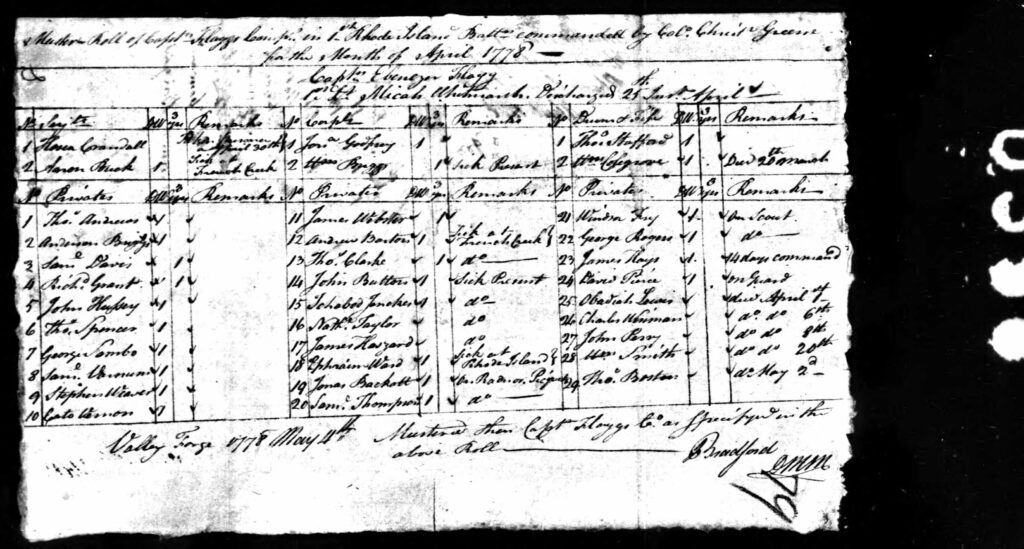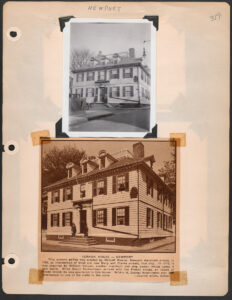
Who was Cato Vernon?
One of our ongoing projects is to discover more about the people who lived, worked, and worshiped in NRF Preservation Properties like 46 Clarke Street—many of whom were enslaved women, men, and children.
While we do not have an illustrated likeness of Cato, he left behind a written record which helps reveal his lived experience.

[Exterior of 46 Clarke Street, 1933]
After the war, like many of those who served in his regiment, he was owed back-pay from the military and he also never received a military pension. In 1793, he was imprisoned in the Newport gaol for his debts and he dictated a letter to William Vernon, his former enslaver, asking for debt relief.
Cato Vernon disappears from the known historical record sometime around 1798.
There is certainly more to discover about Cato’s remarkable life and legacy—not only his service in the Continental Army but also his shaping of the city of Newport through his carpentry work.
For more information about the 1st Rhode Island Regiment, visit BlackPast.Org
Image credit:
Ancestry.com. U.S., Revolutionary War Rolls, 1775-1783 [database on-line]. Lehi, UT, USA: Ancestry.com Operations, Inc., 2007. Microfilm Publication M246, 138 rolls; NAID: 602384; War Department Collection of Revolutionary War Records, Record Group 93; The National Archives in Washington, D.C.

